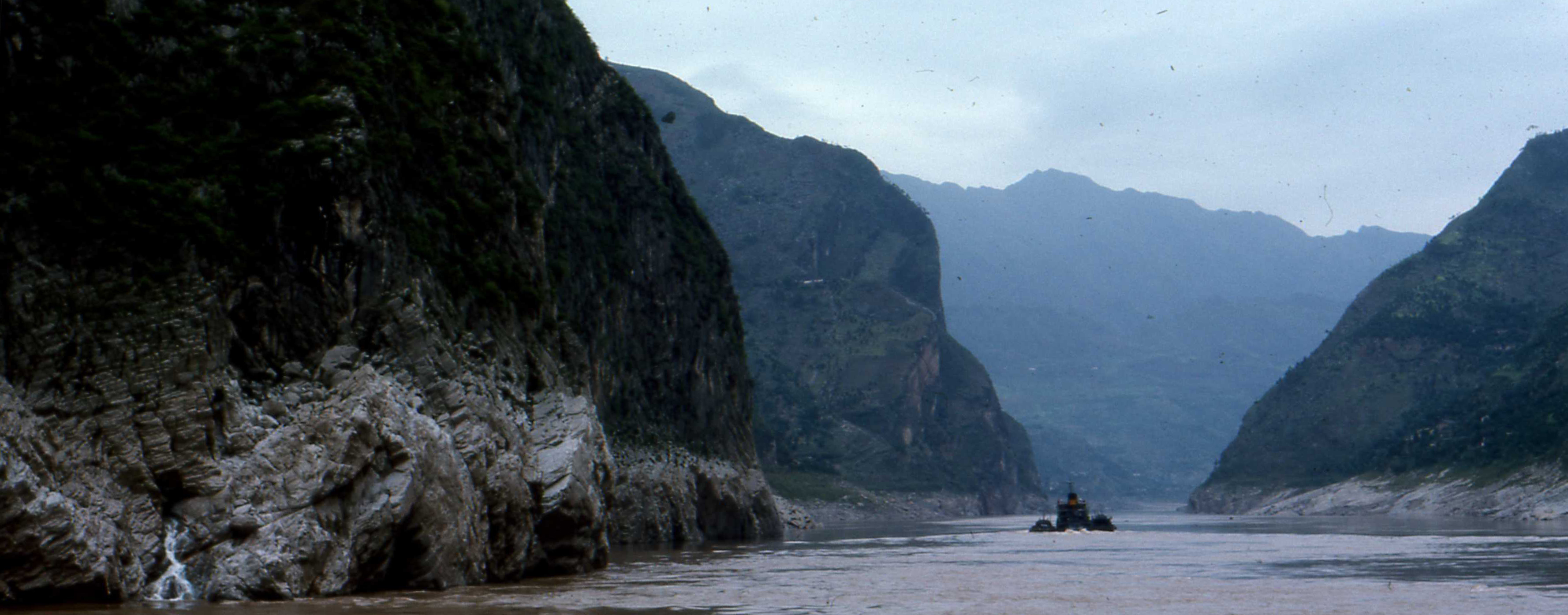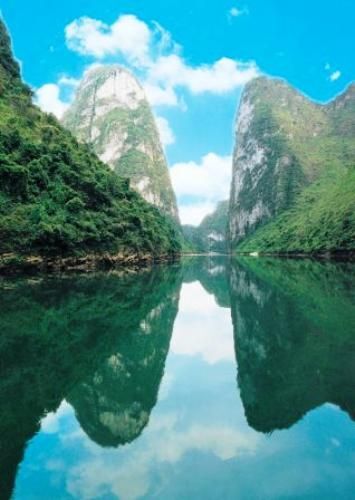-
Title
-
1913 Graham's First Yangtze River Journey
-
Description
-
David Crockett and Alicia Graham left Boston for West China on Sept. 14th, 1911, and sailed from San Francisco on Oct. 4th, 1911. When they reached Shanghai, however, they encountered the aftermath of the Republican Revolution and the missionaries who had evacuated West China on account of it. They therefore spent their first year in China in nearby Shaohsing and Mokanshan learning the Sichuanese language.
The Grahams embarked on their first voyage up the Yangtze River to Sichuan on January 1st, 1913. It is not known how many of David Crockett Graham’s photographs of the Yangtze River were taken during this voyage. Many of his photographs of the Yangtze River were no doubt taken on later voyages during furloughs and evacuations. We do know that Graham’s Kodak camera was stolen by a “Chinese pick-pocket” in Wuchang before they got to Hankow. The camera was later found in a second-hand store and sent back to Graham, but we will never know how many pictures were lost thereby. The photographs in this series represent those that Graham most likely took on that first voyage in the order of locations they visited or passed.
-
Commentary
-
Here follows is David Crockett Graham’s own account of his first voyage upstream (Graham. n/d. Autobiography, pp.42-43):
We left Shaohsing on January 1, 1913, and left Shanghai for Szechwan on a little Japanese steamer January 30, a few days before Chinese New Year. With us were Dr. and Mrs. T. Shields, M. D., who were going to Yachow, Rev. and Mrs. Fred Smith, and Rev. and Mrs. Joshua Jensen. Dr. and Mrs. Shields had a little son and daughter.
I took with me as teacher a Chinese young man who lived in Szechwan, and so was able to continue the study of the language. With Dr. and Mrs. Shields, going back to Szechwan, was a young Chinese, Liu Ch’in Lan, who has been helped by Brooks Clark, formerly a missionary at Suifu, and who has been trained as a nurse. Liu Ch’in Lan and I often took walks on the shore when the steamer stopped.
The steamer stayed a short time at Wu Chang, which is near some of the great Chinese porcelain kilns. We bought some dishes to take with us to Szechwan. Somebody stole my camera or kodak, and later it was found in a local second-hand store and sent back to me.
We stopped also a short time at Hankow, where we went ashore and met some missionaries who lived there. We also saw a little of the city.
The pilot and some others on the steamship were Chinese, and most Chinese on New Year day and several days afterward spend much time gambling. The pilot was busy gambling and not paying attention to his business, and we ran on a shallow beach where we were stuck for about 24 hours before we got off and went on. I went hunting with Liu Ch’in Lan.
We stayed in the steamer until we arrived at Ichang. There we secured houseboats, one for each family, and remained a few days waiting for the captains to hire their crews, buy rice,
secure passports, etc. We had passports secured at Shanghai. We visited the Scotch Presbyterian missionaries, and C. I. M. missionaries in the city.
Finally we started on our houseboats. We lived in one big room, the Chinese cook cooked the food in another smaller room, and the crew slept at night under bamboo sheets in front and behind. There was a great oar on each side, propelled like the tail of a fish. Some houseboats were propelled by several smaller oars on each side. There was a pilot behind, and a boss or T’ai Gong in front. Often the coolies would get on shore and pull the boat upstream by means of a strong bamboo cable. If the wind was strong upstream, they used
their sails and proceeded by the strength of the wind. The men would keep whistling for a wind when sailing upstream, and when on shore they would sing songs in unison, very interesting to hear.
We stopped at dark, generally at a ma t’o or wharf or regular stopping place, where many boats spent the night together for safety. Occasionally I killed a duck or a cormorant, to the
amazement of the Chinese crew. There are several strong rapids in the Yangtse, where
the crews of two or three boats combine so as to pull one boat over the rapids. At such times we got off and went ashore for safety. We saw plenty of wrecks. Through the gorges we struck strong favorable winds, so that we made record time.
Sunday mornings we travelled, and stopped at noon. In the afternoon Dr. Shields held a clinic and I read Scripture and preached a sermon to the visitors from shore. One time Dr.
Shields ran out of iodine. Since it cost nothing, people would come and say "I have a backache,” or tell of some minor or imaginary pain, and Dr. Shields would paint them with iodine, and they would go away thinking that they had been cured. One time he ran out of iodine and to save face painted a number of patients on their backs or elsewhere with shoe blacking. They did not know the difference.
Sometimes the water on the rapids was so swift that the progress of the houseboats was very slow. We would walk ahead, and then sit on big rocks and watch the boats and look at the beautiful scenery. Crowds of Chinese would gather around us to look at us.
The scenery in the Yangtse gorges is among the grandest and most beautiful in the world, and the best way to see the gorges is from a boat on the river. In some places the rocks rose perpendicularly for hundreds of feet, and the only way we could get through such gorges
was for the boatmen to row through, and they had to work very hard.
Often Alicia and I would go walking on shore, taking Margaret with us, or I would go walking with Liu Ch’in Lan and Margaret. I carried Margaret under one arm. She would sit on my lower arm, her face looking out from under my shoulder. It was apparent that she enjoyed it.
One evening we all had supper together. Before the middle of the night I became very sick, vomiting and having bowel movements. Sooner or later everybody became sick. It was thought that the meat we ate gave us something like tomain [sic: ptomaine] poisoning. I got sick before anybody else, and got well the soonest. Those who became sick last were several days getting well.
One sight on the Yangtse is that of wooden coffins placed centuries ago in a crevice in the rocks a thousand or more feet above the river.
In the gorges is the grave of Captain Plant, the man who opened up the upper Yangtse to steamship navigation.
At two places we found fossils in the rock, and I gathered some and took them on to Suifu.
There are some places on the Yangtse where all the strata of rock from the lowest granite to the latest in Szechwan are to be seen exposed on the shore. I borrowed a copy of A Naturalist in West China, which explained the geology of Szechwan and of the Yangtse river.
At Yachow there is a creak flowing into the Yangtze, and on that creek is used a peculiar crooked-tailed boat that is to be found nowhere else in the world. The local Chinese apparently believed that making the tail of the boat crooked made it easier to turn corners in the shallow stream.
We stopped a few days in Chungking and visited a number of the missionaries. Of course we changed escorts. A peculiar eight here is that of houses along the river, on very steep banks, built "on stilts" or on high poles. This was to keep them above the water at high water. Daring the summer the water rises here more than a hundred feet.
On our way up the Yangtse the West China missionaries held a Conference at Suifu and decided that the Smiths were to go to Yachow, the Jensens to Kiating, and the Grahams to Suifu.
We soon proceeded up the Yangtse towards Suifu. At Ho Chiang there is a peculiar custom. Good Chinese women meet men at tables in restaurants and chat with them. They get some reward for so doing, and nearly all merely chat awhile and go home. This is strange for the old China, where there was practically a sex taboo.
When we arrived at Suifu, the missionaries and the Chinese church members met us at the wharf. The Grahams were given sedan chairs to ride in, and at the wharf and all the way to the church firecrackers were set off to give us a grand welcome. Later there was a feast, and for this we at a later date gave a feast in return. This big reception welcomed us to the place where we would live and work for twenty years.
-
Event Date
-
1913
-
Published In
-
Graham, David Crockett. n/d. Autobiography.
 Three_Gorges_Logoish.jpg
Three_Gorges_Logoish.jpg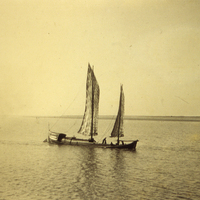 01 Sailboat at Mouth of Yangtze River
01 Sailboat at Mouth of Yangtze River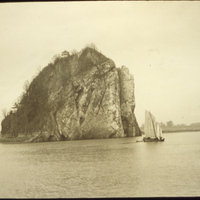 02 Sailboat with Little Orphan Island
02 Sailboat with Little Orphan Island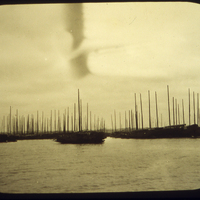 03 Masts of Boats at a Yangtze River Harbor
03 Masts of Boats at a Yangtze River Harbor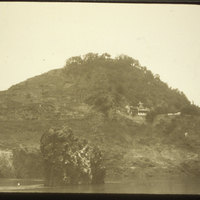 04 Wushan Temple on the Yangtze 1
04 Wushan Temple on the Yangtze 1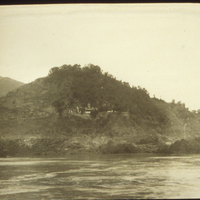 05 Wushan Temple on the Yangtze 2
05 Wushan Temple on the Yangtze 2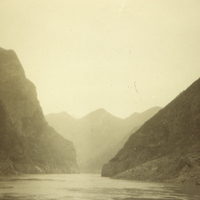 06 Entering the Wushan Gorge
06 Entering the Wushan Gorge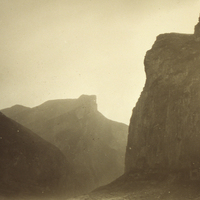 07 Wind-Box Gorge on the Yangtze
07 Wind-Box Gorge on the Yangtze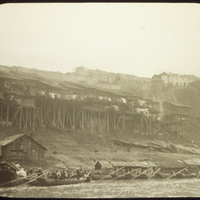 08 Chongqing Shoreline with Houses on Stilts
08 Chongqing Shoreline with Houses on Stilts